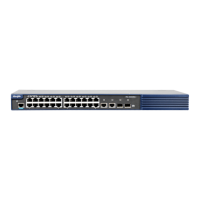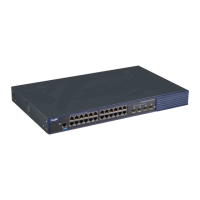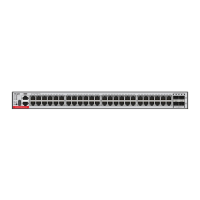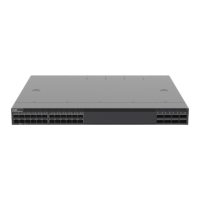Command Reference OSPFv2 Commands
Use this command to configure the OSPF network type in interface configuration mode. Use the no
form of this command to restore the default setting.
ip ospf network { broadcast | non-broadcast |
point-to-multipoint [ non-broadcast ] | point-to-point }
Sets the OSPF network type as the broadcast type.
Sets the OSPF network type as the non-broadcast multi-path access
type, i.e. NBMA network.
point-to-multipoint
[non-broadcast]
Sets the OSPF network type as the point-to-multipoint type.
The value is the point-to-multipoint broadcast type by default. The
non-broadcast option means the point-to-multipoint non-broadcast
type.
Sets the OSPF network type as the point-to-point type.
The default configurations are as follows:
PTP network type: Point-to-Point Protocol(PPP), Serial Line Internet Protocol(SLIP), frame relay
point-to-point (PTP) sub-interface, X.25 PTP sub-interface encapsulation
NBMA network type: frame relay (except for PTP sub-interface), X.25 encapsulation (except for PTP
sub-interface)
Broadcast network type: Ethernet encapsulation
By default, the network type is the point-to-multipoint network type.
Interface configuration mode
The broadcast type requires that the interface must have the broadcast capability.
The P2P type requires that the interfaces are interconnected in one-to-one manner.
The NBMA type requires full-meshed connections, and all interconnected routers can directly
communicate with each other.
The P2MP type does not raise any requirement.
The following example configures the frame relay interface network as the P2P type.
Ruijie(config)# interface Serial 1/0
Ruijie(config-Serial 1/0)#ip address 172.16.24.4 255.255.255.0
Ruijie(config-Serial 1/0)# encapsulation frame-relay
Ruijie(config-Serial 1/0)# ip ospf network point-to-point
The following example configures the frame relay interface network as the NBMA type.
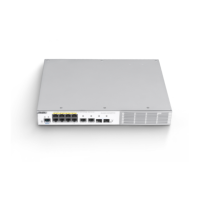
